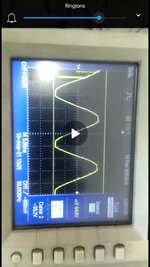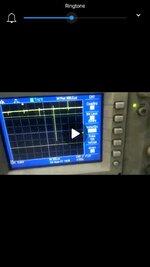prakashvenugopal
Advanced Member level 1
Hi all,
I am facing the issue of noise signal comes into my bridge rectifier circuit through transformer 220v.
I am using 220v ac primary --> 22-0-22v secondary. This secondary output is given to bridge rectifier circuit with 2200 uf electrolytic capacitor in the bridge output --> regulator
I am switching ON/OFF the contactor in the same line of transformer 220V ac. Huge noise seen in the bridge rectifier output during contactor ON/OFF. This is reflecting in the regulator output also.
How to solve this noise? Kindly help.
I am attaching the noise signal seen during contactor on/ off in the transformer seconary waveform 0-22v ac measured in oscilloscope and also bridge output signal. Kindly check and please help.
Regards,
V. Prakash
I am facing the issue of noise signal comes into my bridge rectifier circuit through transformer 220v.
I am using 220v ac primary --> 22-0-22v secondary. This secondary output is given to bridge rectifier circuit with 2200 uf electrolytic capacitor in the bridge output --> regulator
I am switching ON/OFF the contactor in the same line of transformer 220V ac. Huge noise seen in the bridge rectifier output during contactor ON/OFF. This is reflecting in the regulator output also.
How to solve this noise? Kindly help.
I am attaching the noise signal seen during contactor on/ off in the transformer seconary waveform 0-22v ac measured in oscilloscope and also bridge output signal. Kindly check and please help.
Regards,
V. Prakash

